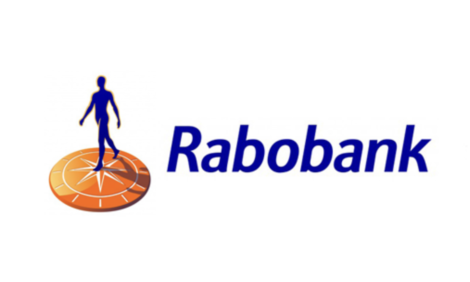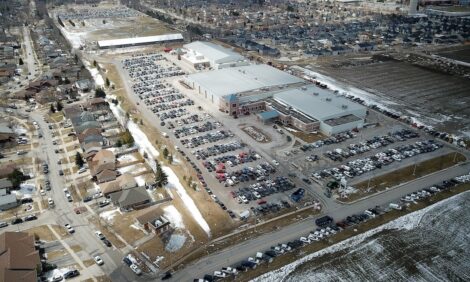



MLA: Weekly Cattle Summary
AUSTRALIA - This report is a collection of weekly cattle price summaries from each Australian territory by Meat & Livestock Australia (MLA).
Queensland
Rain does little to keep numbers down
Numbers at most selling centres in the south-east corner of the state almost doubled on the previous week’s rain reduced yardings. Dalby recorded the largest increase of 80 per cent , as last week’s light falls of rain had very little effect on pasture growth in the general supply area. Despite the severe drought conditions, numbers at the Roma prime sale remained unchanged and the Longreach sale was cancelled due to the lack of numbers, with the next sale scheduled for 9 October.
Quality varies across categories
The overall standard of the young cattle remains very mixed and, apart from some poor condition cows, the quality of the remainder of the grown cattle was generally good. A larger number of restocker buyers were present at the Roma store sale, with a few new buyers from interstate. A fair panel of export processors were in attendance and operating at most markets.
Prices firm to slightly dearer
Light weight yearling steers returning to the paddock were well supplied and generally sold to a firm trend. Most averaging around 168¢, with sales to 197.2¢, and D muscle lines sold at 149¢/kg. A small selection of medium weight B muscle classes to the trade sold to 209.2¢/kg. Some large samples of medium weights to feed lifted in price by 4¢ to average 170¢, with the occasional pen to 189.6¢/kg.
A fairly large supply of heavy feeders averaged 5¢ dearer at 170¢, with sales to 175¢/kg. Light weight yearling heifers could not maintain the previous week’s prices, with most 4¢ to 8¢/kg cheaper, while the better lines settled on 146¢ and a very large number of D muscle classes averaged 130¢/kg.
Heavy grown steers and bullocks received a lift of 3¢ on top of the previous week’s gains. Heavy grown steers averaged 179¢ and sold to 189.2¢, while the bullock portion averaged 180¢ and sold to 190.2¢/kg. Light plain cows held firm, with most in the 70¢/kg range. Medium weight 2 scores averaged 1¢ dearer at 106¢/kg. Good heavy cows improved 6¢ to average 139¢, with sales to 148.2¢/kg.
Victoria
Numbers lift considerably
Overall yardings at MLA’s NLRS reported markets increased 39 per cent week-on-week to total 9,957 head. Pakenham was up by 61 per cent , while Shepparton by 30 per cent and Wodonga lifted by a very large 78 per cent, write MLA anlaysts.
Bairnsdale saw a 36 per cent rise, with Camperdown up 16 per cent and Colac recording a lift of 45 per cent . Warrnambool yarded 33 per cent more cattle week-on-week while Leongatha’s numbers were close to firm. The only centre to experience a fall in numbers was Ballarat, back 8 per cent totalling 243 head.
Quality mixed with good quality cows selling strong
Quality was plain to good across most centres, with Warrnambool and Wodonga cow sale reporting extra buyers in attendance, while Bairnsdale and Wodonga sales had a reduced field operating on young cattle. The large increase in numbers at Pakenham was mostly accounted for by greater percentages of secondary cattle coming forward, resulting in overall quality being plainer.
MLA analysts write, both Camperdown and Shepparton saw some good quality pens of cows offered, with prices generally strengthening for both beef and dairy types. At Wodonga, local and southern restockers were active on well-bred secondary yearlings, however feeder interest was relatively subdued. Trade cattle were particularly scarce at Leongatha this week, with most of the yarding being comprised of store cattle and grown heifers.
Restocker interest lifts as rain continues
A good supply of heavy weight B2 vealer steers eased 7¢ week-on-week to average around 200¢, while their heifer counterparts lost 3¢ to settle on 189.2¢/kg. Medium weight C2 yearling steers to restockers gained 15¢ to 184.4¢, while heavy C2’s to feedlots were up 4¢ on 178.7¢/kg. Heavy weight C3 steers to the trade slipped 3¢ to average around 192.4¢, with their heifer equivalents back 14¢ on 171.4¢/kg.
Heavy C3 grown steers met a slightly cheaper trend, back 2¢ on 192.7¢, while a good supply of C4 steers were unchanged on 188.9¢/kg. Cows met mixed trends, with plainer lines generally easing, while good heavy D2 dairy types gained 7¢ on 136.2¢ and D2 to 3 score beef cows were up 2¢ to 8¢ with average prices around 144.9¢/kg.
South Australia
Consignments lift despite good growing conditions
Cattle supply lifted 7 per cent at markets reported by MLA’s NLRS. Quality was mixed at all centres, however there is ample feed available following the good rain received in some areas now to allow for better finishing. All the regular processor buyers attended markets, but one did not operate at the fortnightly Millicent sale. Restocker and feeder activity was mostly limited, although there was increased interest at the SA Livestock Exchange earlier in the week, although most continue to remain hesitant.
Prices mixed
Price trends varied throughout individual markets. Generally, however, the young cattle were mostly unchanged to dearer. Cow prices were firm to slightly dearer for the best quality heavy weights and unchanged to mainly cheaper for the rest. Some older and some plain quality cows were 5¢ to 12¢/kg cheaper and even more at times. Grown steer prices varied the most with trends from 2¢ lower to 10¢/kg dearer. Over-the-hook trends this week have seen cows lift 10¢/kg cwt across all categories.
Western Australia
Wet and windy conditions in the south
The southern agricultural districts of WA recorded further strong frontal weather activity that brought rainfall to southern and coastal regions. Accompanying the fronts were severe winds that have seen reports of crop damage in south coastal areas.
The recent spate of wet weather has brought about a certain amount of concern for hay producers, with un-seasonally wet conditions delaying this process. Forecasts have, however, predicted a reasonably fine and dry week in southern regions.
The traditional cattle rearing areas of the southwest and southern coastal regions are also looking for fine weather, with the recent cold and wet conditions having had a detrimental affect on cattle growth and condition but, having said this, agents are still reporting a better than expected weight in this year’s calf turnoff.
The far north of WA has seen some sporadic thunderstorm activity, while parts of the Murchison and Gascoyne regions remain dry. Mustering activity remains at reasonable levels, while the flow of cattle from these regions is also moderate.
Saleyard supplies remain moderate
Physical saleyard numbers were marginally lower this week as Muchea and Mt Barker both recorded reductions in their throughput, while the southwest sale maintained its limited supplies. Pastoral cattle supplies continued to dominate Muchea’s yarding, while the supplies of trade and heavy weight local steers and heifers remained tight. Cow volumes were moderate, while yearling store numbers remained only fair.
The limited supplies of prime local heavy weight steers recorded a slight weakening in processor demand, with this also the case in pastoral categories. Trade weight yearling numbers were more limited this week and the small numbers made quoting difficult, but generally prices were maintained. Store demand from both the feeder and restocker sectors remains selective, but active and similar to recent weeks. The cow market continued its erratic run, with sales early in the week easing, while heavy weight bulls remained difficult to sell.
TheCattleSite News Desk


